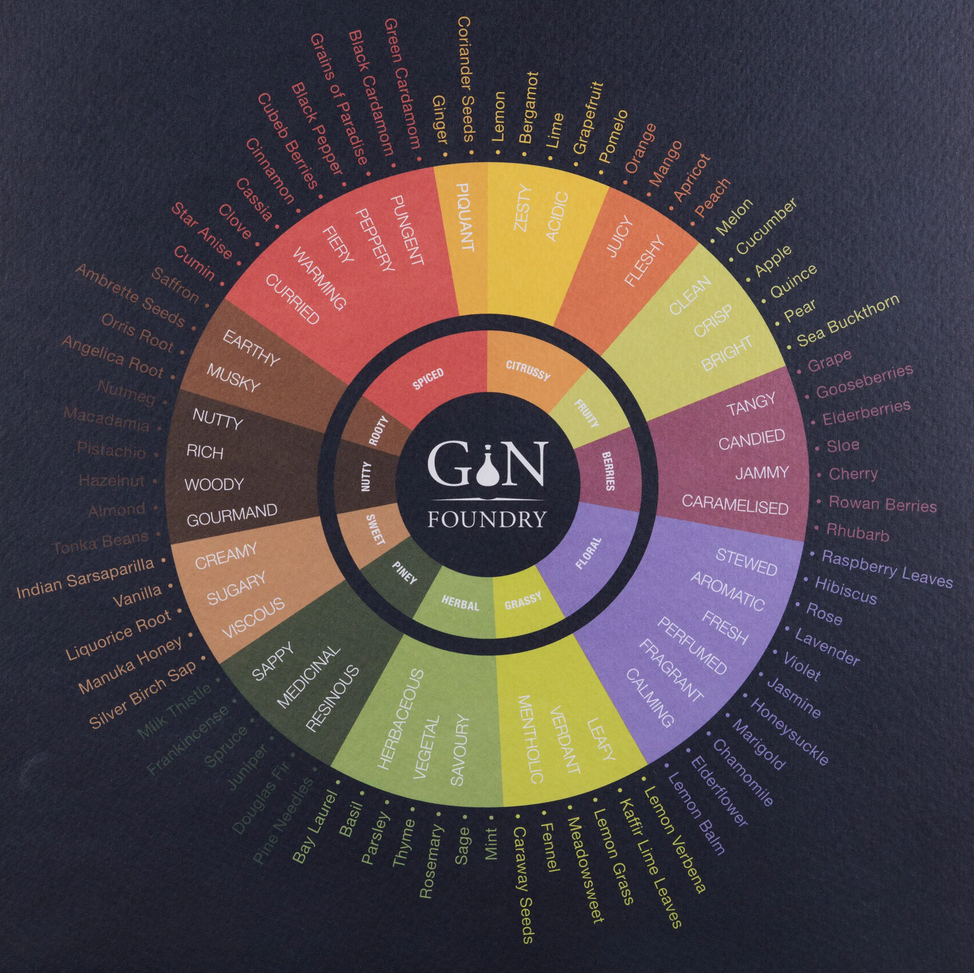AN INTRODUCTION TO TASTE
Taste is subjective and a personal thing, what one person enjoys another may not. This is best reflected with Marmite; you love or hate it!
The beverage industry is full of brands trying to lure you in with their flavours, smells, unique botanicals and stories. With Explorer's Gin we use Red Cedar, this has big bold pine tones, peppers provide the warmth and citrus provides the zing.
Whilst the botanicals are both unique and compelling, how do the other flavours translate? What should you expect from coriander, angelica root, bay leaf and angelica seed? How do you describe what you are drinking? What is right and what is wrong?
The Diffords guide wrote an excellent article on how to taste and asses spirits. This is partly shown below alongside my own learnings from the WSET Level 1 course that I completed.
This relates to the clarity, intensity, and colour of a spirit. As a distiller it is possible to change the appearance post distillation by adding colour, macerating the spirit with botanicals or by blending in another alcohol.
Clarity: Most spirits are clear but in the gin category you will find hazy gins. This is caused by oils not being chill filtered out of the spirit post distillation. This can add a greater depth of flavour.
Intensity: How clear is the spirit? It is either water white (totally transparent) or opaque (cannot see through it).
Colour: Colour can indicate potential flavour. Most gins will be colourless, but gins remacerated or cut with another spirit may take on those colours and characteristic profiles. Casked gins will have an amber hue, fruit gins will take the colours from the fruit whilst London Dry should remain colourless.
Bring your glass gently to your nose and take a short sniff. Try not to swill your glass or take too long a sniff, as this could overwhelm your nose impairing your ability to smell the spirit.
Condition: How does it smell to your nose? Does it smell of solvents (chemical), plastic or musty damp (tails from process) or clean (pleasant aroma) rich with botanicals?
Intensity: How intense is the smell on your nose? WSET teach students that spirits are either light (Vodka), medium or pronounced (Whisky).
Aroma: What does it smell of? Gin Foundry produced the 'Gin Wheel' which helped break down aromas into colours and associated botanicals. Reds related to heat, pungent, spice and warmth. Aromas are very subjective.
How does the spirit taste in the mouth? Most people have problems in describing what they can taste. To help assess the spirit I was taught by the WSET to do the following.
- Add a little water to the spirit, after smelling it.
- Take a small sip and hold the spirit in your mouth for a few seconds.
- Spit it out and draw air over your tongue.
- This helps draw the flavours and characteristics out
Sweetness: Does the spirit taste sweet, sour, salty, bitter, or dry.
Texture: How does the spirit feel in the mouth? Liken this to touching something with your fingers and how that is translated. Does the spirit feel harsh, sharp, rough, warming, watery, smooth, or silky?
Flavour Intensity: How do the botanicals come across? What is pronounced vs. light in the background?
Flavour Characteristics: The six most common terms used in describing gins are citrusy, floral, herbal, hot, piney, and spicy. Through tastings and numerous reviews, the 'Gin Foundry' extended these to include berries, grassy, sweet, nutty and rooty characteristics. These terms will allow you to quantify a flavour or aroma that you may detect and match them to botanicals that may be used.
Finish: How long do the positive flavours remain in the mouth once the spirit has been either drunk or spat out? If there is only one remaining in the mouth it is deemed 'simple' but if there is layering with multiple flavours, then it should be seen as 'complex'.

BOTANICAL WHEEL OF TASTING
There are no rights or wrongs in trying to describe what you are drinking. The framework above allows you to assess what is in the glass. The next stage is about trying to recognise those flavours.
The Gin Foundry botanical tasting wheel can help identify those flavours. The wheel associates colours with flavour types and then botanicals. Western red cedar would be green, piney and resinous.
As Olivier Ward from Gin Foundry states 'It is just gin, there is no need to navel gaze or be a snob. Taste it to discover what you like and dislike; how you prefer to drink it. Then relax, get tonic and ice and just enjoy it.'

WISH TO LEARN MORE?
The Wine & Spirit Education Trust (WSET) provides best-in-class education and qualifications to inspire and empower the world’s wine and spirits professionals and enthusiasts. As part of their Level 1 Course, you will be taught the main styles and types of spirits through sight, smell, and taste to develop an understanding of the key factors affecting flavours and aromas.
I completed my WSET Level 2 course prior to the first lock down and found it has helped me describe what I am both tasting and smelling in a more constructive manner. May be one day it will allow me to judge a spirit!
The link below is to the WSET website where further information can be found.

